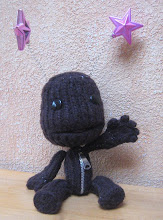Along with “inFAMOUS” and “Red Faction: Guerrilla,” “Prototype” is one of the few sandbox, third person action games released this summer. “Prototype” puts players in the shoes of Alex Mercer in New York after he dies and awakens in a morgue with amnesia. While escaping from the morgue and the military, Alex discovers he has the abilities to change his body into different weapons and people, absorb humans and take on others' memories. New York has also been quarantined because a virus has caused people to turn into brainless, hostile versions of their previous selves. Alex is set on using his powers to figure out who did this to his body and how to make them pay.
Players advance in “Prototype” through missions and can choose when to complete story missions, side missions or just cause havoc around New York. While some side missions like disguising Alex as the military and destroying the infected are fun, most side missions are forgettable. Story missions are fun when Alex can fight the story missions require it frequently.

Prototype is a fun third person action game, and Alex can upgrade a variety of powers with evolution points from defeating enemies and completing missions. Missions like moving from waypoint to waypoint or gliding to a certain point on the map without stopping are annoying in execution, but they are great ways to earn evolution points. Alex's powers range from different weapons his hands can transform into, such as blades, claws or hammerfists, to stealth upgrades and enhancing his movement.
It's unlikely that players will upgrade everything by the end of “Prototype.” However, some upgrades are useless and it seems unnecessary to have unlockable combo trees or the ability to curb stomp dead enemies. There are enough powers worth unlocking like the ability to glide, air dash or other attacks.
“Prototype” is close combat intensive and the only long range attacks Alex obtains are his whipfist and super-human strength. His strength allows him to grab cars, trees and destroyed tanks and helicopters to become fodder for his projectile attacks. Alex can also commandeer most military weapons like rocket launchers, tanks and helicopters and use it against them.

Alex may have to use stealth if beating his opponents into submission does not work. Alex can absorb and imitate the likeness of any human in “Prototype.” Absorbing others can be brutally fantastic or unnoticeable, but the stealth in “Prototype” could be more challenging because soldiers will not notice Alex unless he changes powers in front of them. Jumping hundreds of feet and beating the people of New York comes as no surprise to them. New York is a veritable buffet for Alex because absorbing people is not only a quick health boost for Alex, but over absorption allows Alex to use devastator attacks. These destructive abilities allow Alex to kill everything within his attacks' sight.
“Prototype” has some stunning visual moments like turning on Alex’s thermal vision or infected vision. There are also no frame rate drops when Alex throws cars, explodes tanks, or kicks helicopters down, and it's a sight to behold. Unfortunately, the in-game cutscenes leave much to be desired. Texture popping and other issues are obvious during in-game cutscenes, but the CGI scenes are beautiful and the memory flashes Alex receives when he absorbs someone relevant to his memory are interestingly done. The memory flashes are a mix of real images and CGI that will make players wonder if similar stories have played out elsewhere.
The music in “Prototype” is not intrusive and complements fighting scenes well. The voice acting is not horrible, but there were several instances when Alex would say one line during the CGI scene and transition to an in-game cut-scene to continue his speech mentally. While this annoyed me, I do not think it will bother too many people.
The story is interesting even if you do not accomplish the story missions, and it's insane fun to start wars with the military and other infected creatures in the streets of New York. While Alex may never retrieve his memories, he will have fun destroying everything. The combat is fluid, powerful and often fun to play as you make Alex crush soldiers, absorb some passerby and then initiate a devastator attack that flattens the two tanks and helicopters chasing you. Some of the visuals and voice acting could have been more polished and fluid, but the memory scenes are presented in a fresh artistic blend of CGI and real images that help immerse players in this alternate version of New York City. “Prototype” is definitely worth picking up.
Rating: B+
Platforms: PS3,Xbox 360, PC
Price: $59.99
ESRB: M for Mature
Pub: Activision
Dev: Radical Entertainment
Players: 1















